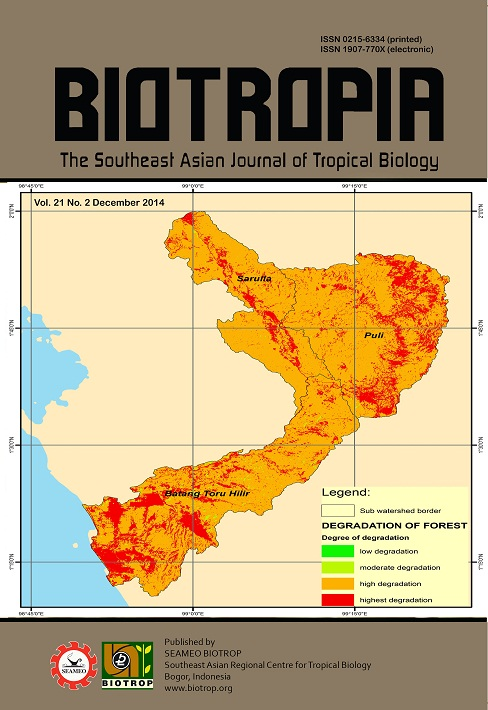
Tags
High Turbidity Affects Filtration Rate and Pseudofaeces Production of the Mud Clam Polymesoda erosa (Solander 1876) (Bivalvia: Corbiculidae)
Content Language : English

P. erosa is an economically- and ecologically-important bivalve which thrives in brackishwater mangroves or Nypa zones. Unpredictable weather conditions and unregulated anthropogenic activities in mangrove area could lead to high turbidity conditions and possibly affect the filtering capacity of P. erosa. A laboratory experiment was conducted to determine the effects of turbidity concentration and body size on the filtration rate and pseudofaeces production of P. erosa. Filtration rates significantly increased with higher turbidity concentration up to 750 mg L-1 (P < 0.05). Pseudofaeces production also increased with increasing turbidity concentration (P < 0.05). Body size did not affect the filtration and pseudofaeces production of P. erosa. Results suggest that P. erosa is resilient to highly disturbed, turbid environments and therefore could be a potential candidate species for aquaculture.
Link

This work is licensed under a Creative Commons Attribution-NonCommercial-NoDerivatives 4.0 International License.
